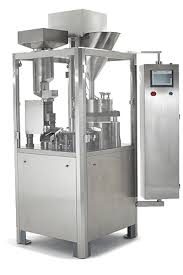Machines of this kind pack the tablets in blister packaging by forming separate compartments-so-called "blisters"-that hold tablets securely for protection from moisture, light, and contamination. The web of plastic or aluminum material, depending on the product's needs and packaging, is fed into the machine. It gets heated and moulded in the machine to form cavities in the desired shape and size for each tablet. These machines normally achieve speeds ranging between 200 and 600 blisters per minute, hence supporting high-volume production.
It then fills each cavity with a tablet after formation through its accurate product-feeding systems, which assure minimum spillage and that each cavity gets the correct number of tablets. Advanced versions accomplish this with servo-driven mechanisms that allow controlled and correct placement of the tablet to maintain their alignment and consistency in their placing. This is important to make sure the dose is uniform and within the regulatory minimum standards. Further, at this stage, some machines will automatically offer quality checks through the detection of misaligned or missing tablets, which can also help in reducing errors and waste.

A sealing film, typically aluminum foil, is applied over the cavities, bonded through heat and pressure to form a seal that is hermetically tight, protecting the tablets. This hermetic seal is important for extended product shelf life and potency. Some machines have adjustable temperature controls that help manufacturers adjust the sealing process heat based on material specifications for optimal packaging without damaging the tablets.
Quality control plays an enormous role in the process, while sensors detect inconsistencies or errors, automatically rejecting faulty packs in real time. This level of automation cuts manual oversight as much as 30%, freeing the operators for monitoring, not handling individual units. In fact, according to Pharmaceutical Technology Magazine, companies adding automated blister packing see a return on investment within 18–24 months, driven by reduced waste and labor costs.
Efficiency expert Peter Drucker once said, "Efficiency is doing things right," a principle clearly applied in the design of a tablet blister packing machine for efficient production, accuracy, and the ability to maintain premium standards.
